SUMMARY
This is AI generated summarization, which may have errors. For context, always refer to the full article.
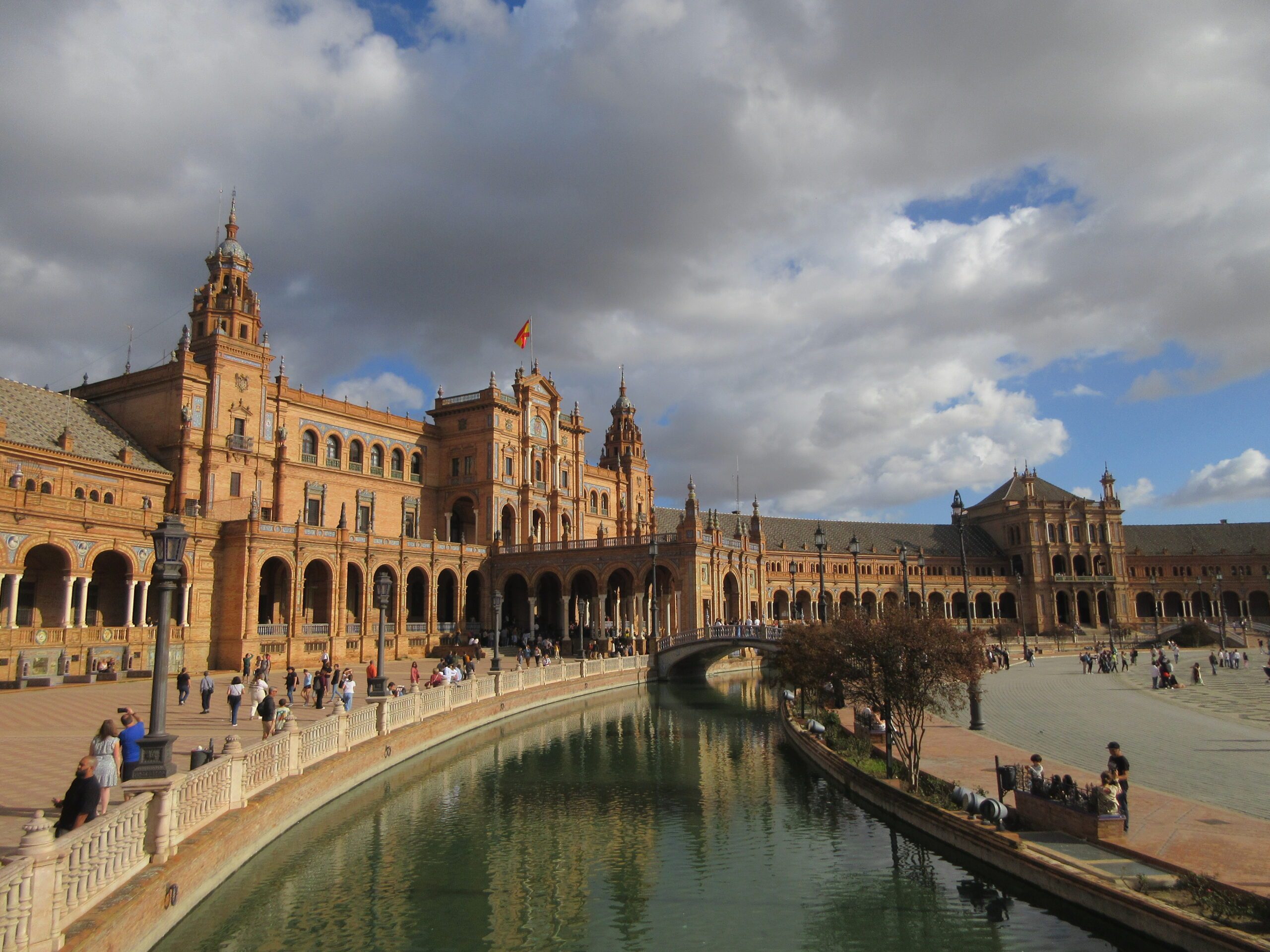
Spain and Portugal are interesting countries with plenty to offer. Both have a rich cultural and historical heritage that are worth experiencing. Spain has heavily influenced the Philippines in terms of religion and culture. There’s plenty to see, do, and eat once you start planning your trip.
Getting a visa
You’ll need a Schengen visa to enter either Portugal or Spain. Some of the basic requirements for visa applications include:
- Valid passport
- Photo (35x45mm)
- Itinerary
- Accommodation confirmation
- Application form
- Proof of occupation or business registration
- Proof of funds (bank certificate, credit card statements, bank statements, etc.)
You can check these websites for more information:
Get into Europe
There are no direct flights from Manila to most countries in Europe. You’ll have to transit in the Middle East, Turkiye, or another Asian country. Book your tickets months in advance to get a good deal. You can apply for a Schengen visa as early as six months. This gives you more than enough time to find an acceptable flight price that’s within your budget. You can use Skyscanner or other similar sites to find flights. Once you find one, I would recommend that you book directly with the airline.
Itinerary and places to visit
*You’ll start your trip in Lisbon, Portugal then end it in Madrid before returning to the Philippines. This itinerary assumes you’ll start with one full day.
Lisbon
Day 1
Depending on the airline and schedule you choose, you’ll arrive in Lisbon in the morning or afternoon. It’s easy and convenient to get to the city from the airport. You can take public transportation such as the bus or metro to the city center at an affordable price.
You’ll most likely be tired from the long trip. Check into your accommodation and get yourself acquainted with the neighborhood you’re staying in. Lisbon is compact with many attractions within walking distance of each other. Some destinations that are far from the center are easily accessible by public transportation. Get some rest so you’ll have energy to explore Lisbon the next few days.
Day 2
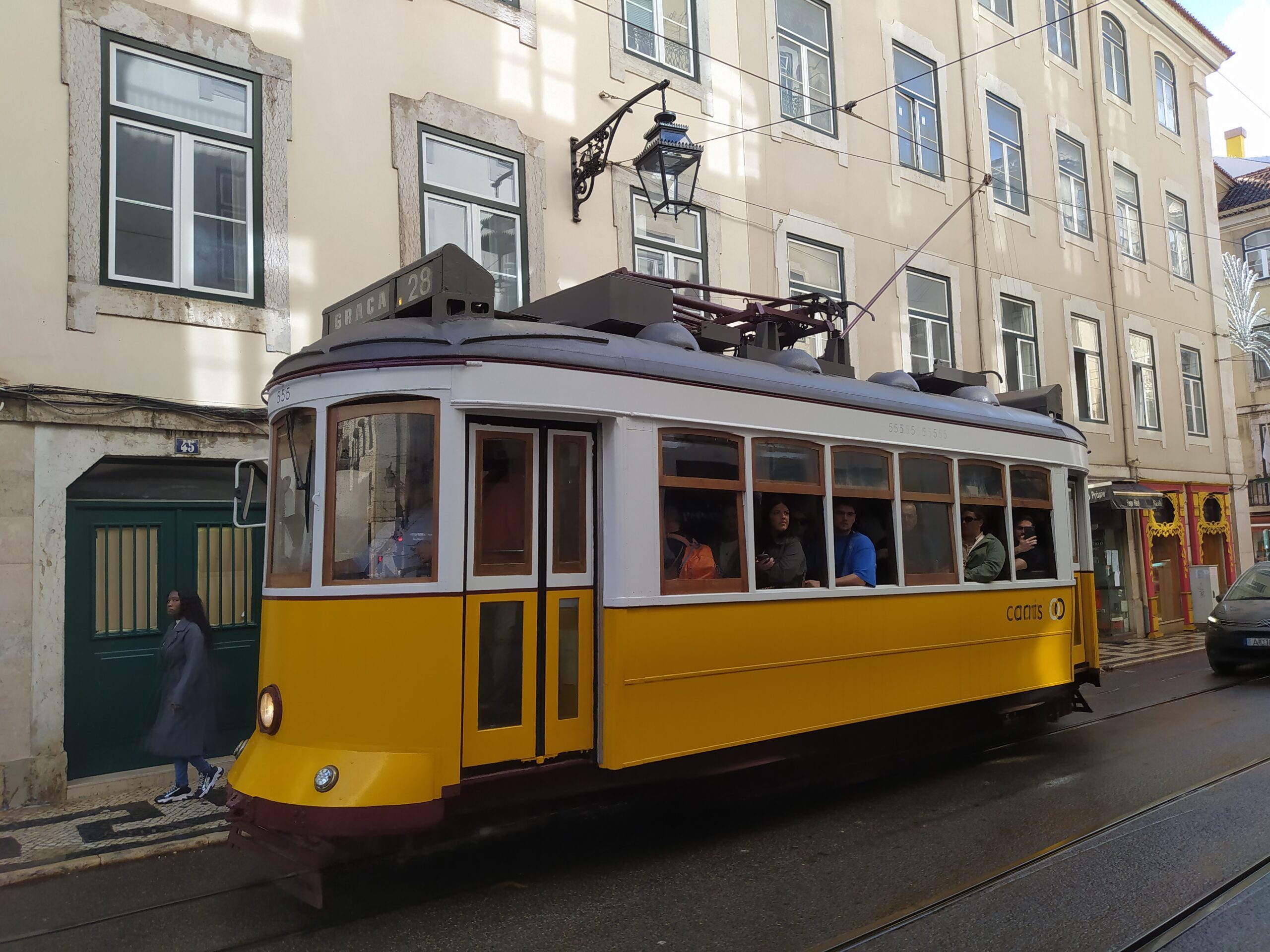
The ideal way to explore Lisbon is to group attractions together. Some destinations are near or a short ride away from the city center while others are in another district further away. After breakfast, get on a tram or bus bound for Torre de Belem, one of the most famous landmarks in the country. The tower is a UNESCO World Heritage Site that dates to the 16th century. After taking photos and learning about the tower, walk all the way to another landmark, the Monument to the Discoveries. The latter commemorates the Portuguese navigators that explored unknown territories (from the European perspective) in the 15th century.
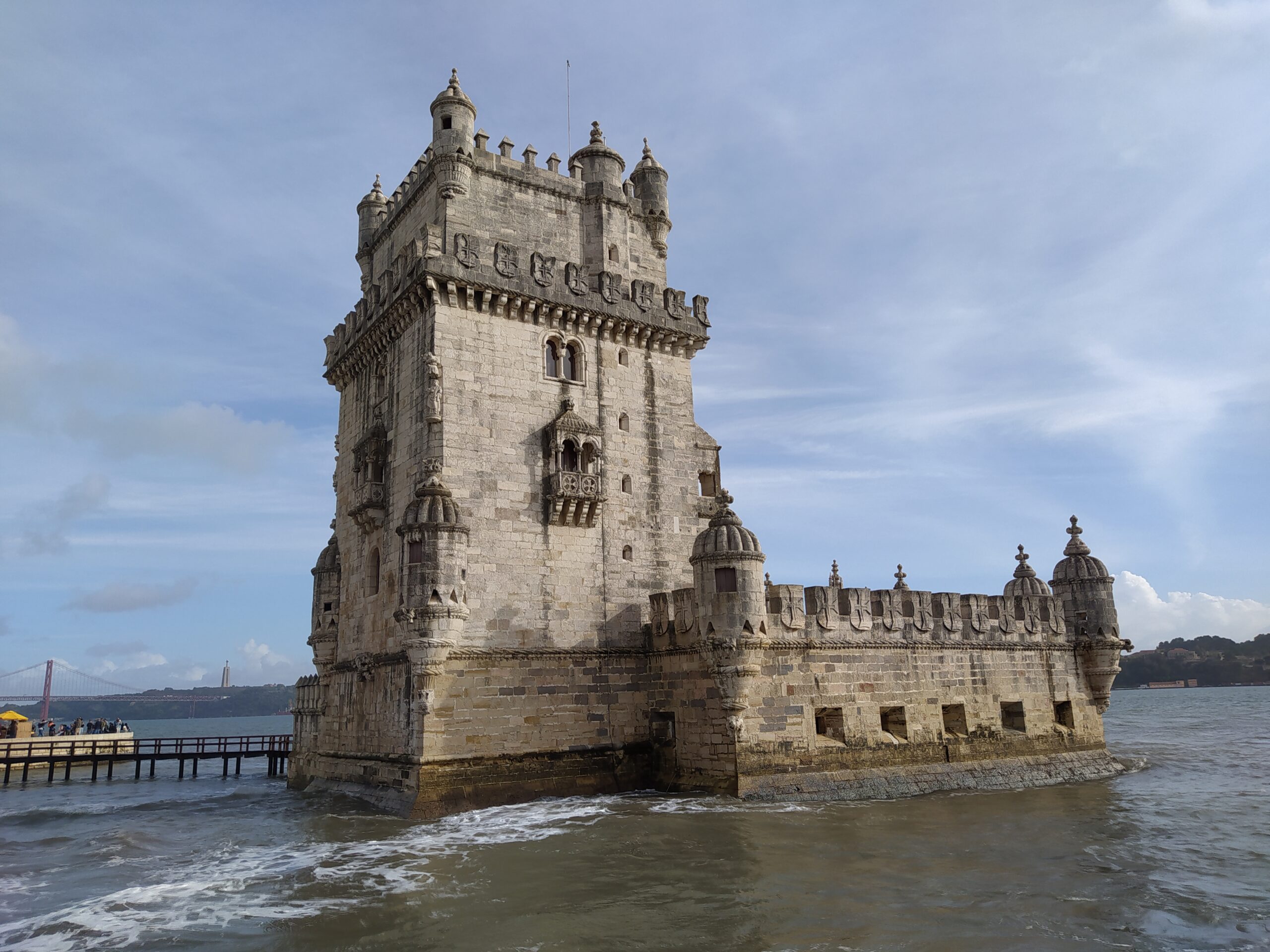
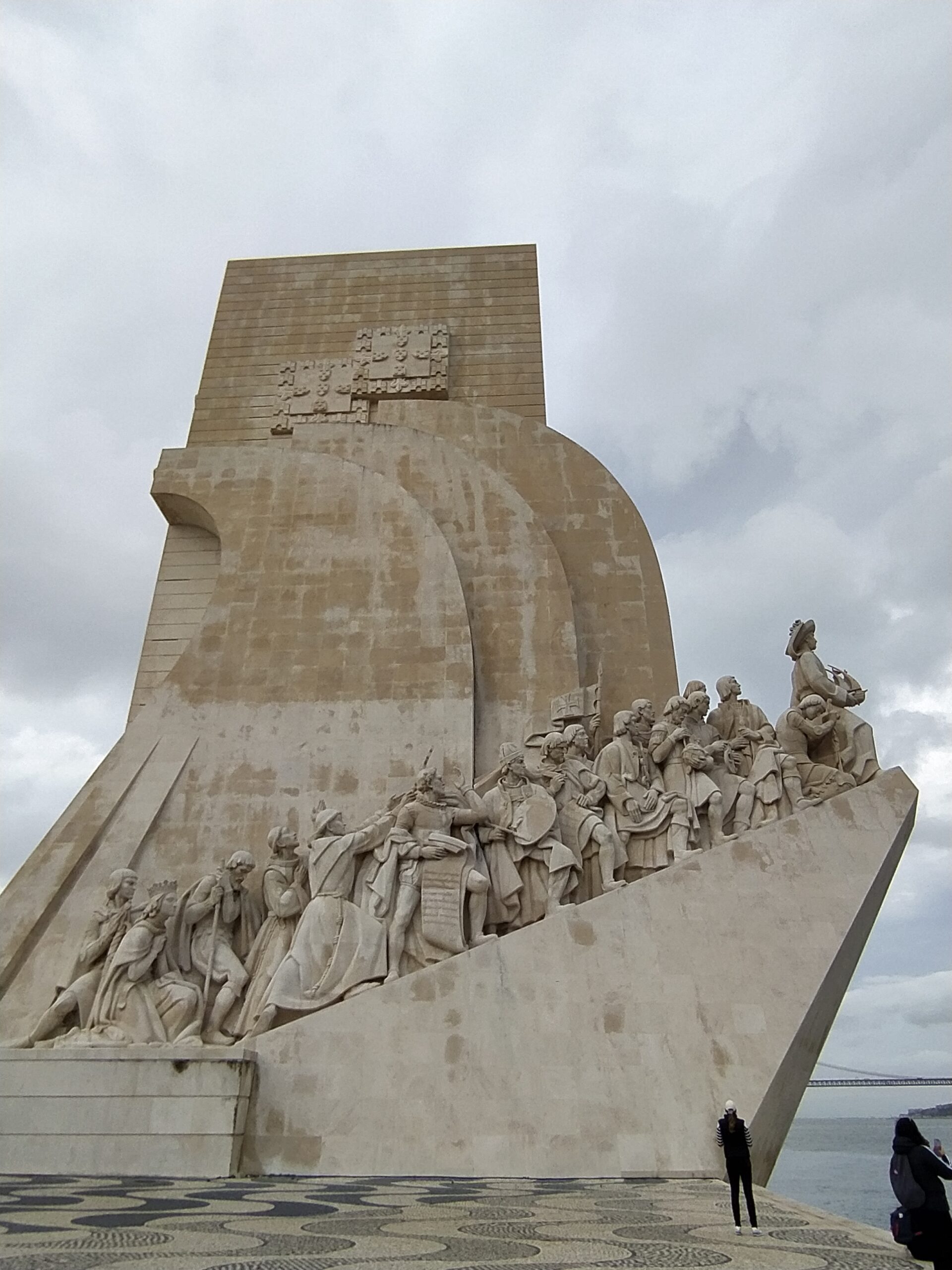
Within walking distance from the monument is another UNESCO World Heritage Site, the Mosteiro dos Jeronimos. Just like the Monument to the Discoveries, the monastery is another symbol of Portugal’s Age of Discovery. The complex houses the tomb of Vasco da Gama. Grab a bite at a nearby cafe or restaurant before heading over to the Palacio Nacional da Ajuda. The latter used to be the Portuguese Royal Family’s residence. Here you will find collections of furniture, gold and silverware, paintings, porcelain and other items, and rooms its residents used. After an entire day of sightseeing, check out either LxFactory or Time Out Market Lisboa for snacks, drinks, and/or dinner.
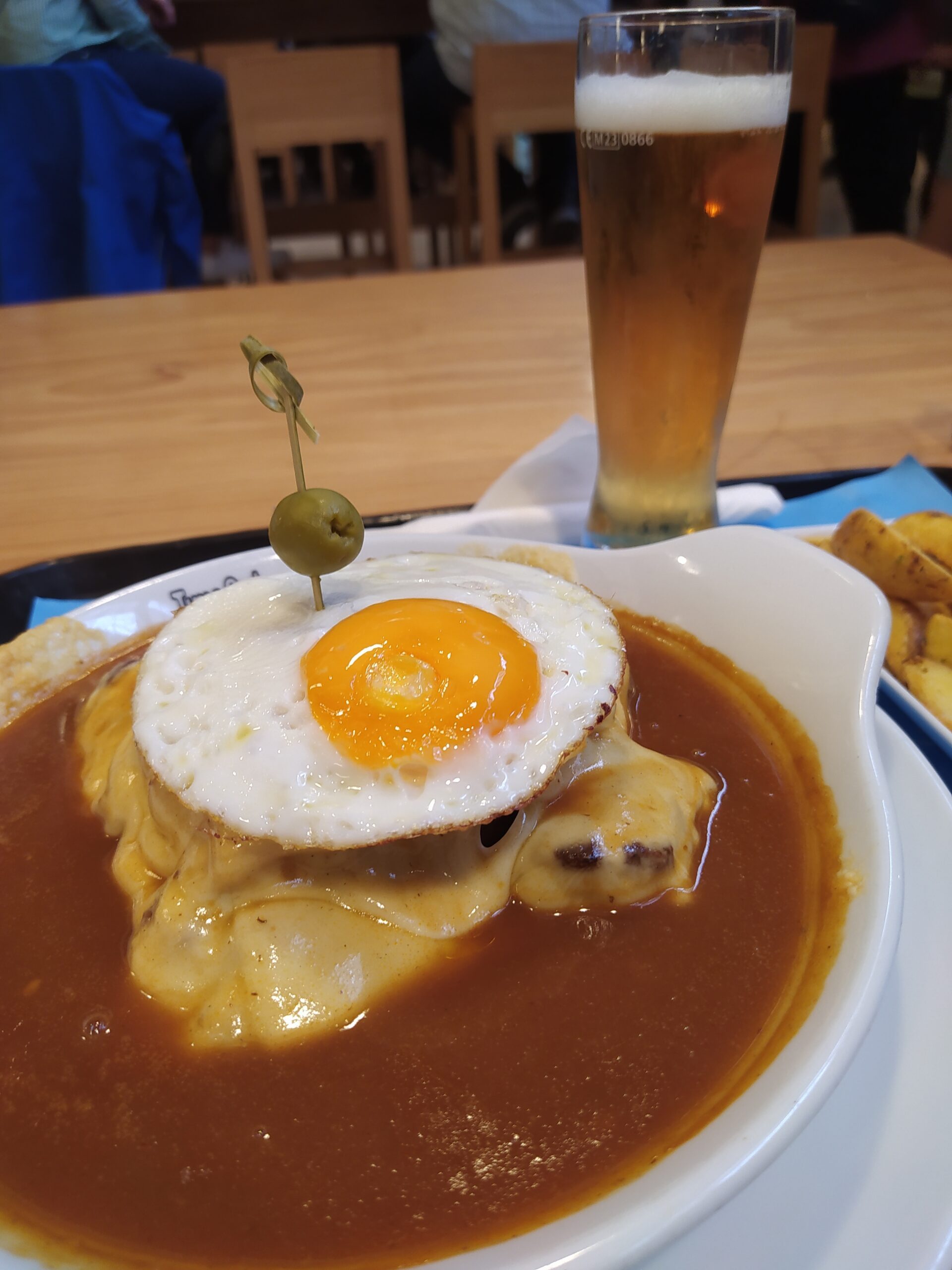
Day 3
After breakfast, check out of your accommodation and leave your things in the storage area. Have a relaxed day walking around Lisbon’s beautiful neighborhoods and see some of its most famous attractions. Make your way to Igreja do Carmo, one of Lisbon’s oldest churches. It dates to the 14th century. A powerful earthquake in the 18th century almost leveled the entire church and killed several churchgoers. It was never rebuilt after the natural disaster. The structure you’ll see now is the ruins of the old church.
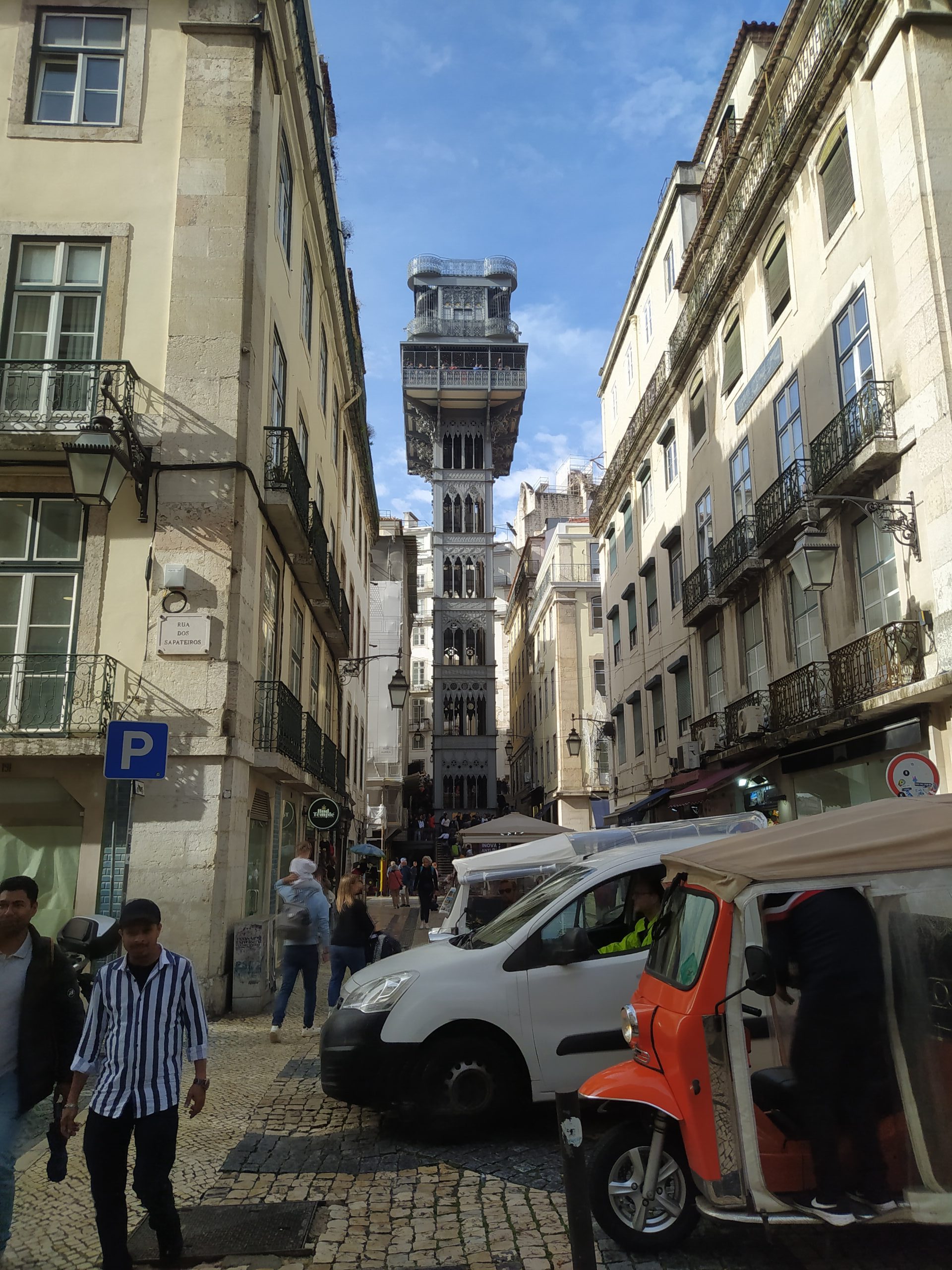
Not too far from the church is one of the city’s most recognizable landmarks, the Elevador de Santa Justa. The latter’s inauguration took place in the early 1900s. The elevator used to be a go-to mode of transportation because it connects commuters to the Bairro Alto district. However, it’s now mostly tourists who board it to have a novel experience while exploring Lisbon. The line gets really long, and you might have to wait to board (you’re better off just taking a picture of it from the outside honestly).
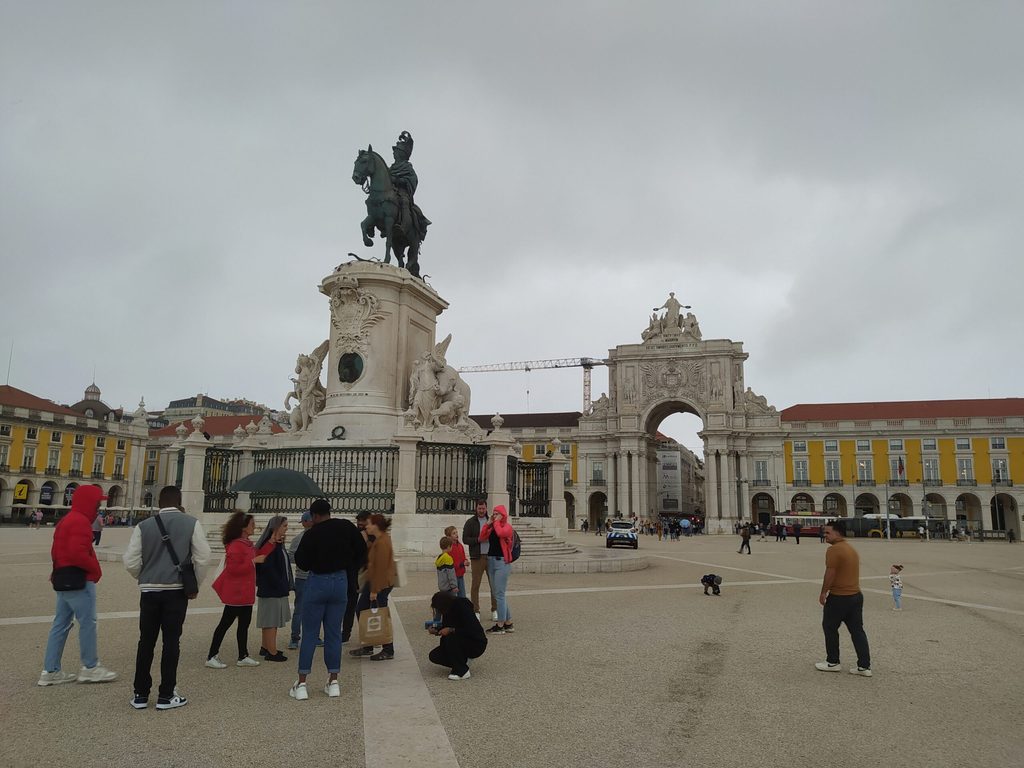
After a few photos, walk along Rua Augusta, one of the city’s most touristy areas. Here you’ll find many restaurants and shops. You can grab a bite somewhere here before visiting a few more attractions. After eating, make your way to Arco da Rua Augusta. The latter is a famous landmark where many tourists and locals go to. The arch dates to the 19th century. You can pay to go to the top of the arch to get overlooking views of the square. Visit the Se, a well-known and beautiful cathedral in the city. Its consecration took place in the 12th century. The church mixes architectural styles. After sightseeing head on over back to your accommodation to pick up your things and go to Porto. You have the option to take the bus or train. You can book bus tickets online or you can go to the train station to buy a ticket.
Porto
Day 4

Porto is a compact city that’s convenient to explore as long as you don’t mind the occasional steep hill. You can do a lot of sightseeing in one day, but Porto is the kind of city you’d want to savor. It has plenty of old-world charm to elicit a sense of nostalgia from visitors despite not being local. Start your sightseeing at the Avenida dos Aliados. This area is lined with beautiful buildings, shops, cafes, and restaurants. Next stop is the Clerigos Tower. The latter is one of the most recognizable landmarks in the city. It dates to the 18th century and is around 75m high. If you’re up to it, you’ll need to climb more than 200 steps to reach the top of the tower where you’ll get a bird’s eye view of the surroundings.
The Livraria Lello is a short walk from the tower and is one of the city’s most popular attractions. It’s known as the “most beautiful bookshop in the world.” It’s a small library/bookshop but I’d agree that it’s pretty with its unique wooden staircase. However, I’ll leave it to you to agree or disagree with the title “most beautiful bookshop in the world.” From the bookshop, make your way to the beautiful Igreja do Carmo. Its blue and white tiles will grab your attention as you approach it. After visiting the church, make your way to Sao Bento station. The station contains beautiful tile work depicting the history of Portugal.
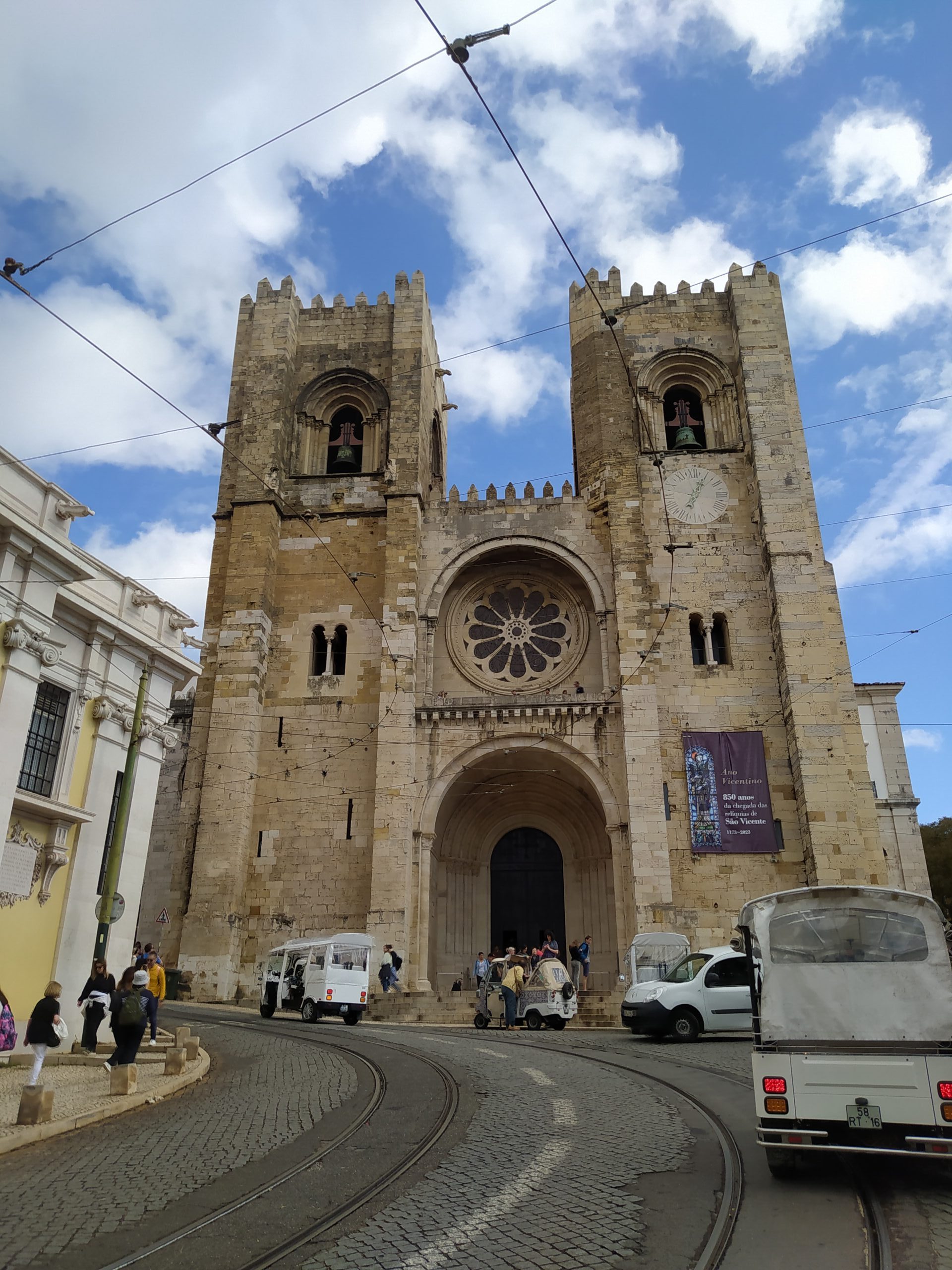
After your brief stop at the station, head on over to the Sé. The cathedral has a long history dating to the 12th century. Inside you’ll find more of the detailed tilework that city is known for. One of the reasons visitors go here is because of the overlooking views it provides. Snap some photos of Porto from above before heading out. As the day ends, make your way to Cais de Ribeira, to hang out by the river, and to get something to eat and drink. The best overlooking view of this district is from the historic Dom Luis I Bridge.
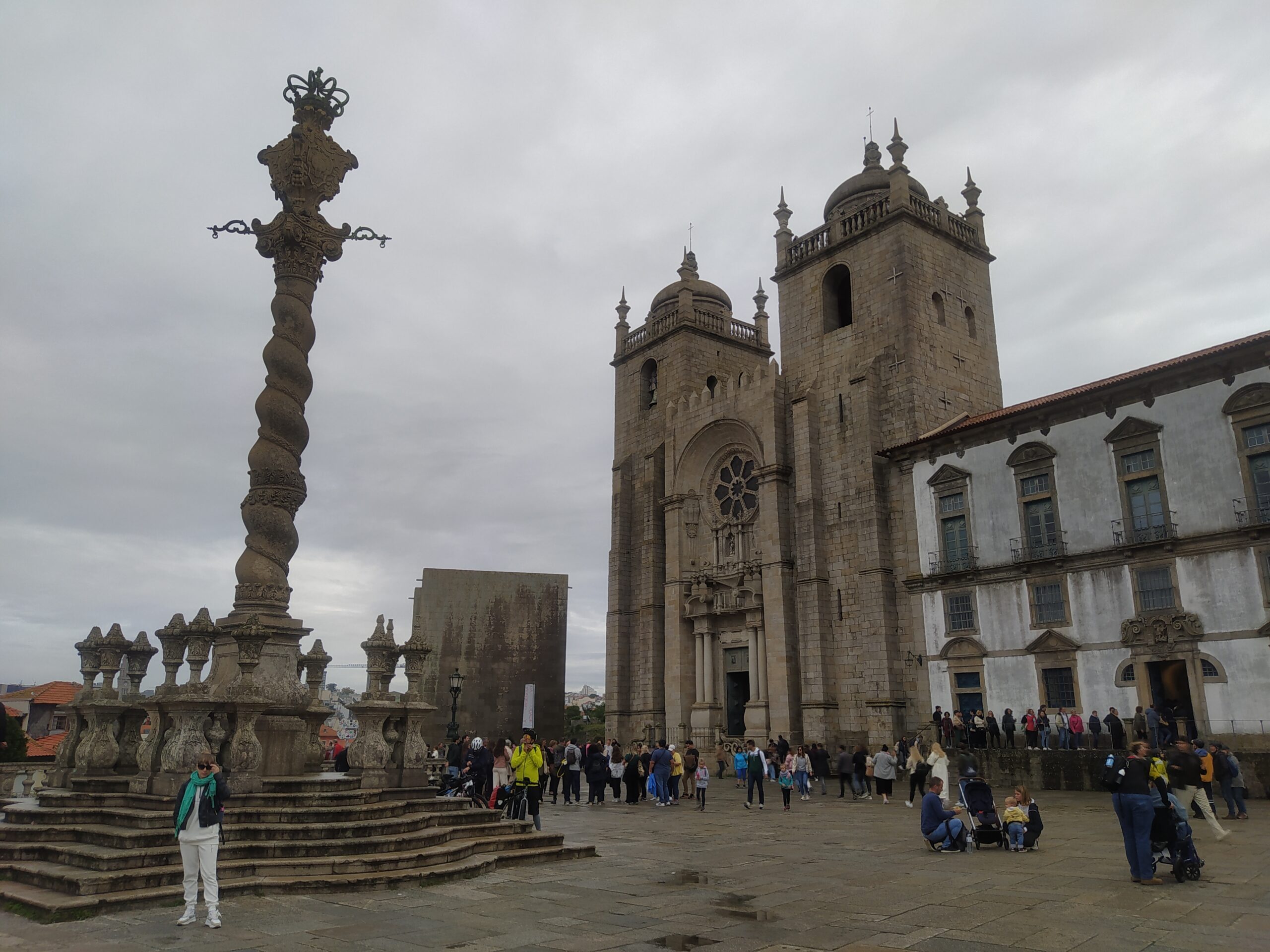
Day 5
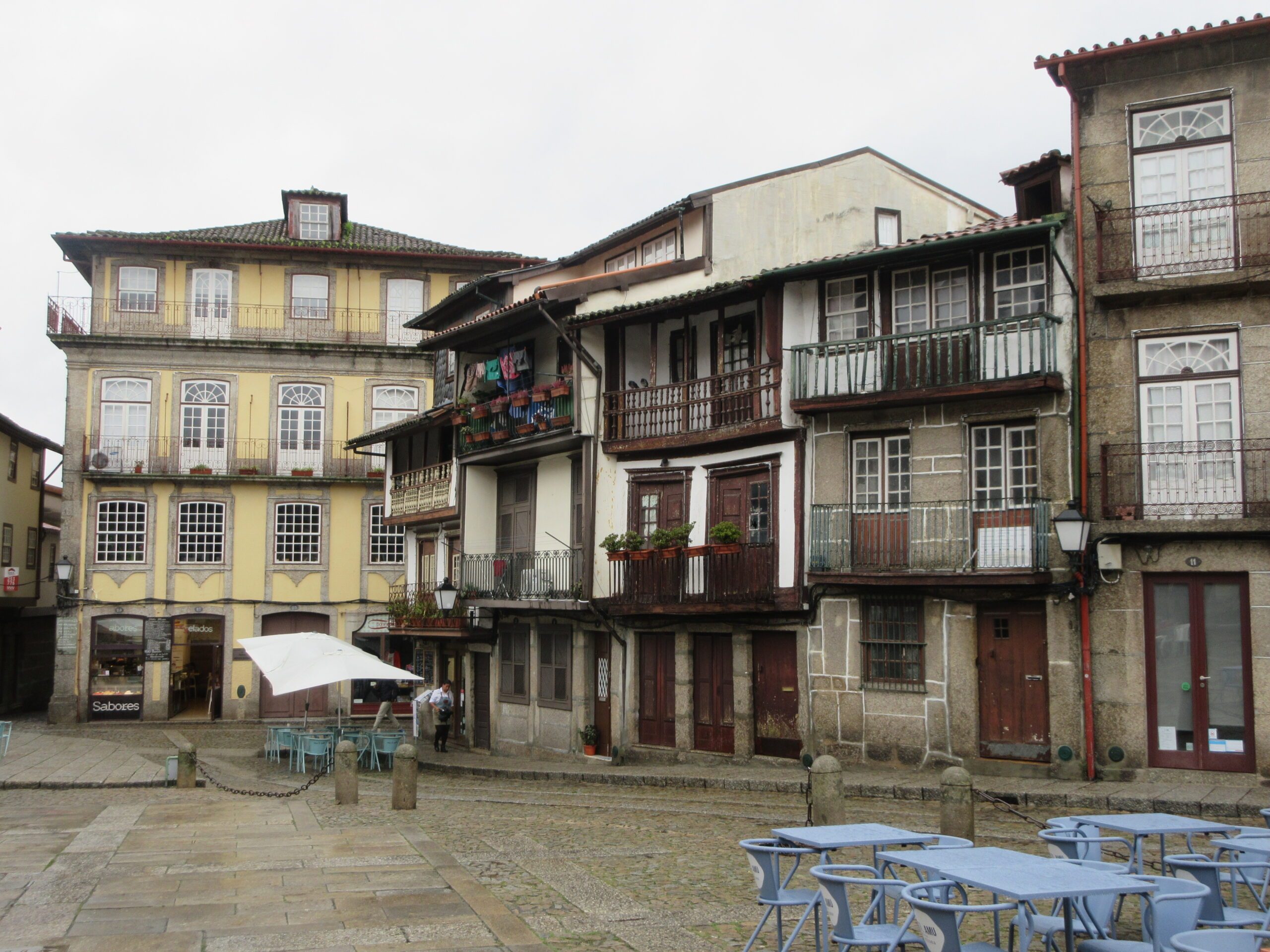
Go on a relaxed day trip and see one of Portugal’s oldest cities, Guimarães. The latter was founded in the 10th century and is the country’s first capital. Its historic center is a UNESCO World Heritage Site and is an example of the evolution of Portuguese architecture. You can see relics of the city’s past while exploring; one such example is the castle not too far from the center. Wander around the narrow and serpentine streets of the historic center to get a glimpse of the past. Enter one of the churches or museums to learn more about the city’s history or simply eat and drink at one of the cafes and restaurants.
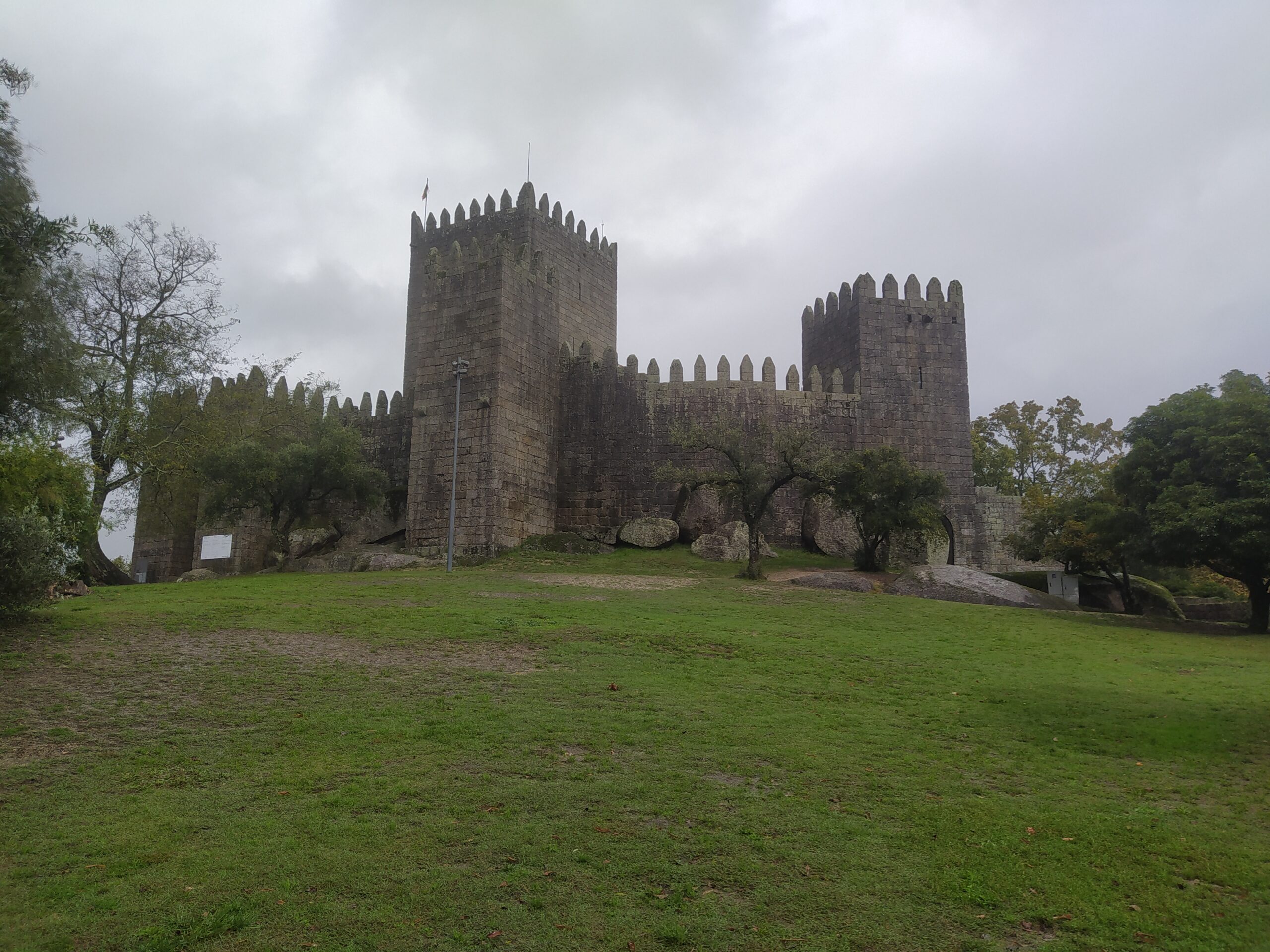
You can purchase bus tickets to this quaint city here. You can also just show up at the train station to buy a ticket.
Day 6
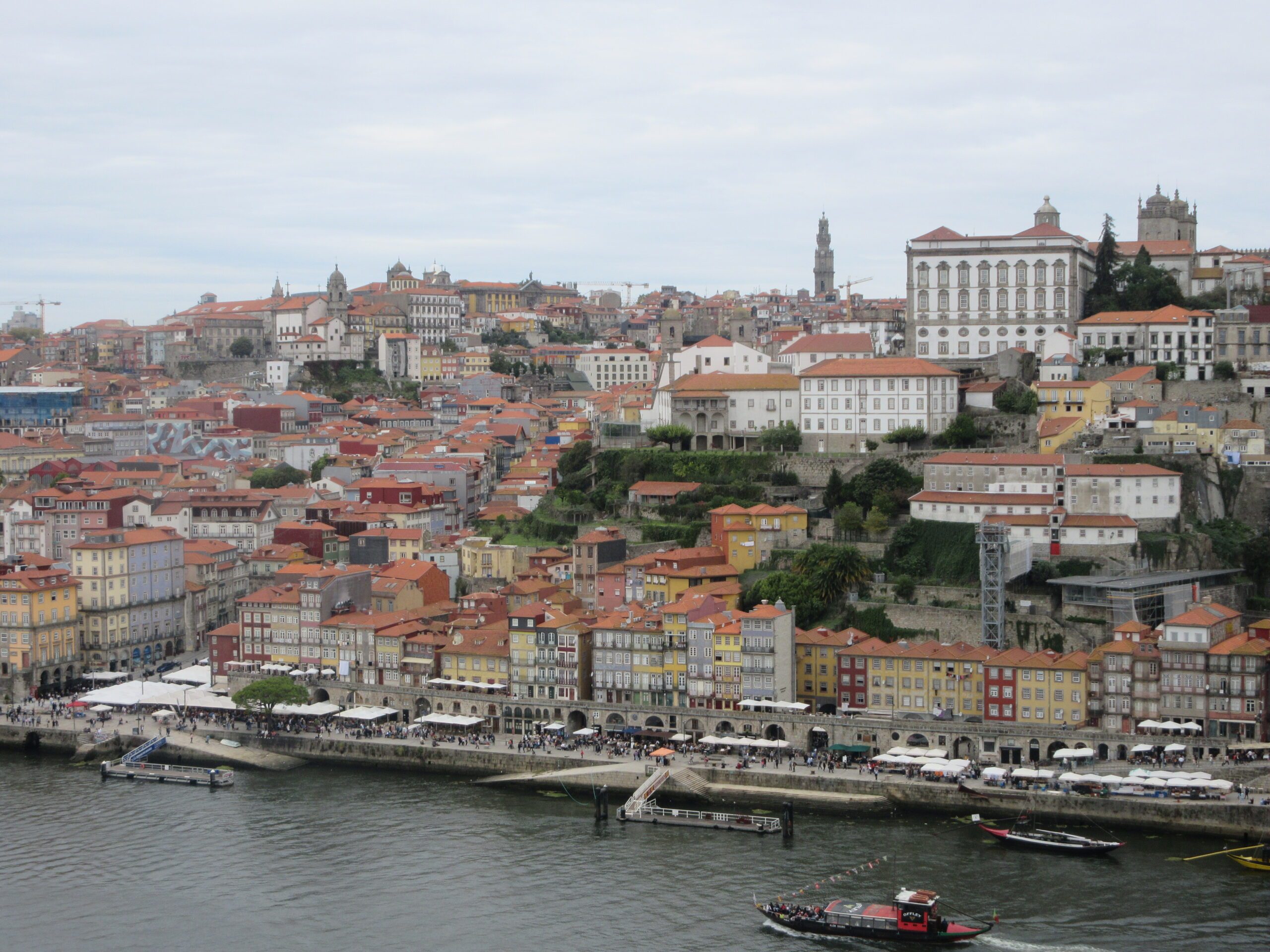
Check out of your accommodation and have a slow-paced day in Porto before returning to Lisbon. If you have the budget, you can dine at the atmospheric Café Majestic. It has an Art Nouveau exterior and a vintage interior. I had a snack there just to experience its ambiance. If you’re up for more sightseeing before leaving, you can check out some places such as the Palacio da Bolsa, World of Discoveries, Parque das Virtudes, Vila Nova de Guia, Igreja de São Francisco, and the Music House just to name a few. It’s perfectly fine to just hang out in Cais de Ribeira, check out Mercado do Bolhão, and/or Baixa. You can hang out, eat, and drink in those areas.
You have the option to take the bus or train back to Lisbon. You can book bus tickets online here or here. You can also go to the train station to buy a ticket.
Lisbon
Day 7
Check out of your accommodation and spend your last full day in Portugal wandering around Lisboa. By now, you’ve visited most of the main attractions during the first two days of your trip. The city is home to many free observation decks (yey!) that provide beautiful overlooking views. I spent a good deal of time wandering around Lisbon’s narrow alleys and quaint streets. The city is a great place to relax and chill in because of the many restaurants and cafes. You’ll also find plenty of museums and art galleries, if you’re interested in checking them out. Some places you might want to visit include: Castelo de Sao Jorge, Museu Calouste Gulbenkian, Museu Nacional de Arte Antiga, Museu do Oriente, Museu Nacional do Azulejo, and others. After dinner, prepare for your overnight bus to Seville, Spain.
You can book bus tickets here.
Seville
Day 8

The overnight bus might’ve been tiring, so after arriving at your accommodation, leave your bags at the reception or storage area and rest for a while before heading out. After resting check out a few of the city’s attractions at a slow pace. Make the Plaza de España your first stop. This sprawling plaza is one of the most famous attractions in Seville. Take a leisurely walk around to admire the decorative tile art or watch an impromptu flamenco dance. The Plaza de España is inside the Parque Maria Luisa. The latter is a historic green space lined with trees, decorated with fountains, pools, and tile art. The park is an ideal spot to just unwind and relax. If you’re up to visiting a museum or two, you can check out the Archeological Museum and the Museo Artes y Costumbres Populares. If you’re on a budget, might as well save your money for the Real Alcazar and the Seville Cathedral.
From the park, make your way to Barrio de Santa Cruz. On your way there, you’ll most likely pass the Real Alcazar and the cathedral – save a visit to those two for the next day. Seville is a lovely city to explore on foot. Barrio de Santa Cruz is a maze of winding paths through historic streets and buildings. Walk all the way to Setas de Sevilla, one of the city’s renowned landmarks. Its unique shape contrasts with the old-world atmosphere of the city. You can go up the structure to get overlooking views. I’d recommend watching a flamenco performance. There are a few theaters that have live performances at night. I caught a show at the Casa de la Memoria.
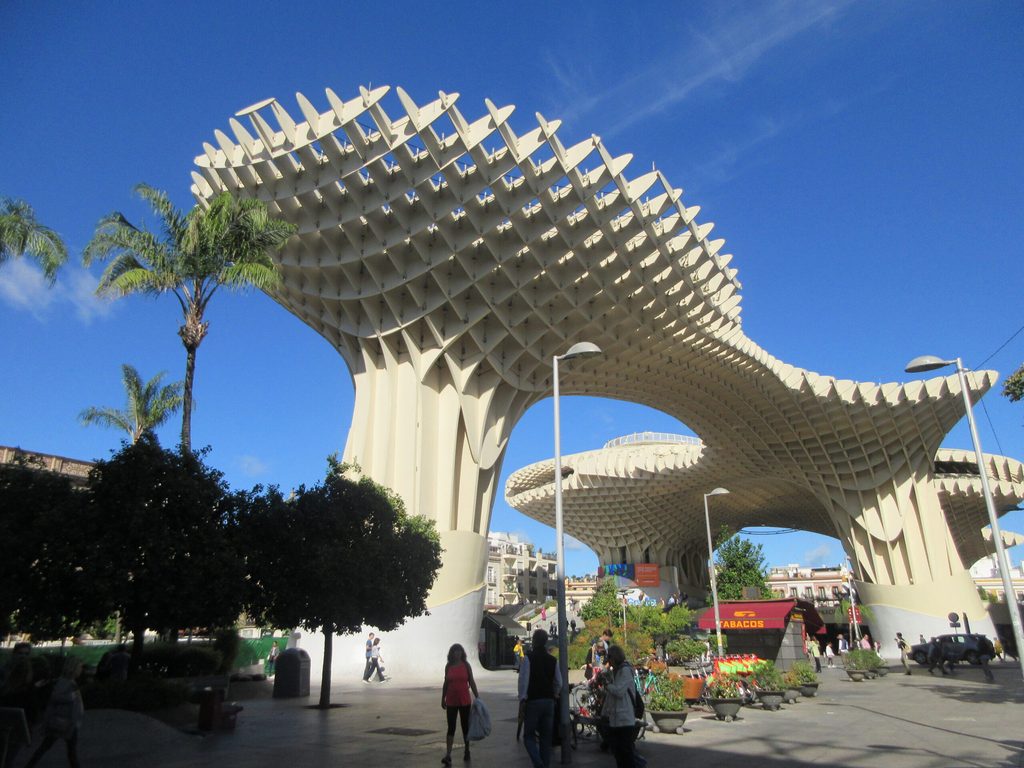
Day 9

After breakfast, it’s time to check out more attractions in Seville. Head on over to the Real Alcazar as your first stop of the day. This UNESCO World Heritage Site provides visitors with a glimpse of Seville’s Islamic past with its distinct architecture and manicured gardens. It was a fort for the Caliph of Cordoba back in the 10th century. Subsequent rulers had additional buildings and structures built over the centuries. After the Christians expelled the Moors, the Alcazar underwent a reconstruction based on the Mudejar aesthetic. Explore the rooms, courtyards, halls, and gardens during your visit.
Book your tickets online to reduce waiting times.
After the Real Alcazar, make your way to the Seville Cathedral, the largest Gothic cathedral in the world. Inside you’ll find elaborate chapels and woodcarvings that are centuries old. Make your way up the tower to get overlooking views of the surroundings.
Not too far from the cathedral and the Real Alcazar is the Archivo General de Indias. This building houses Spanish colonial era documents such as their administration of territories. After museum- and church-hopping, you can have a late lunch or snack (if you already ate lunch in between attractions) somewhere in the area around the Seville Cathedral or in Barrio de Santa Cruz.
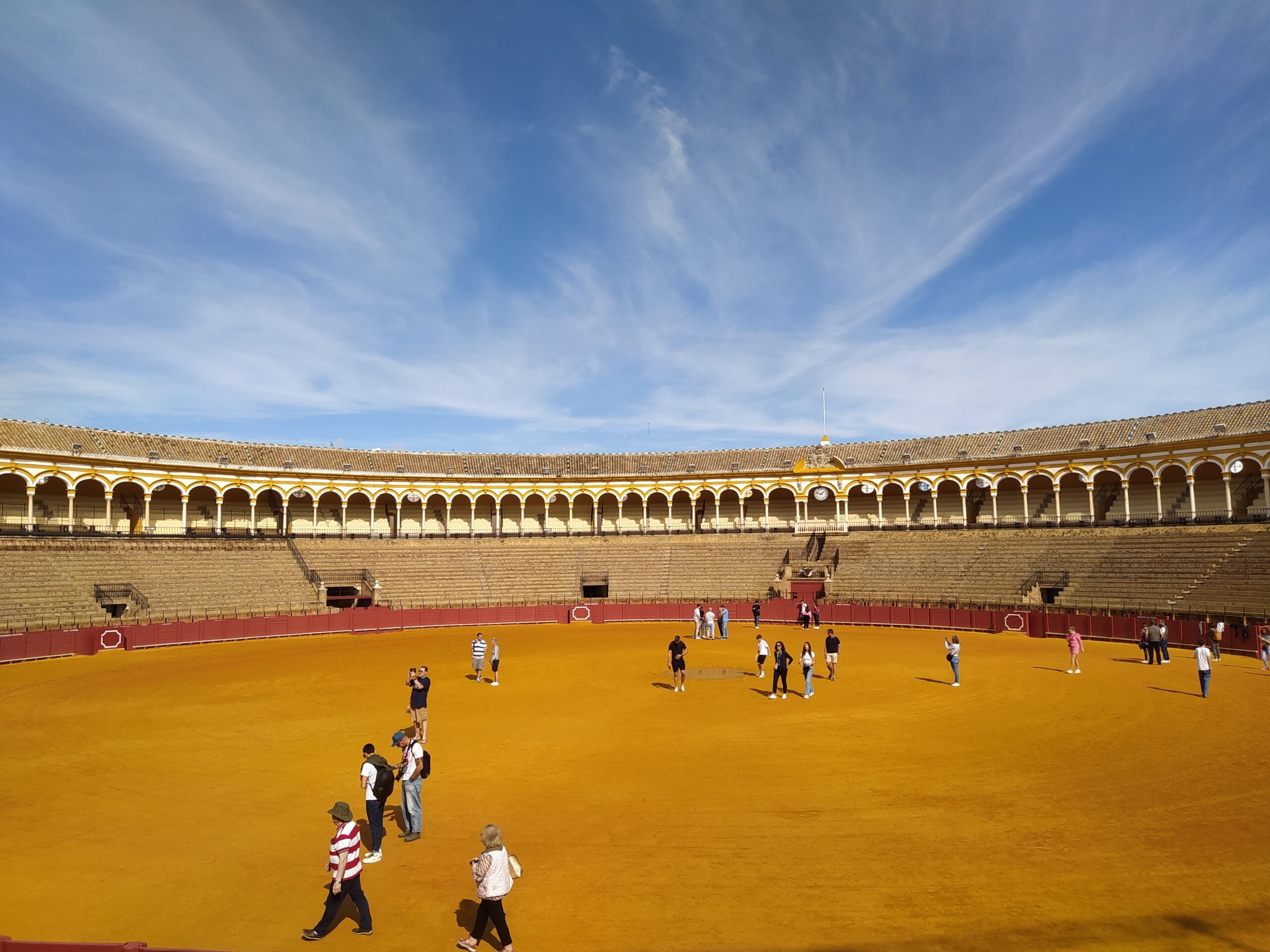
The Real Maestranza de Caballería de Sevilla is one of the places I was keen on visiting. It’s an arena where bullfighting takes place. Here you’ll find information about this Spanish tradition through various exhibits. You can walk around the bullring to imagine the spectacle taking place. If you’re lucky enough to be in Seville during bullfighting season, you might want to watch the actual event. After sightseeing, hang out and dine in your favorite spot in the city.
Fees:
- €13.50 – Real Alcazar
- €12 – Seville Cathedral
- €10 – Real Maestranza de Caballería de Sevilla
Day 10
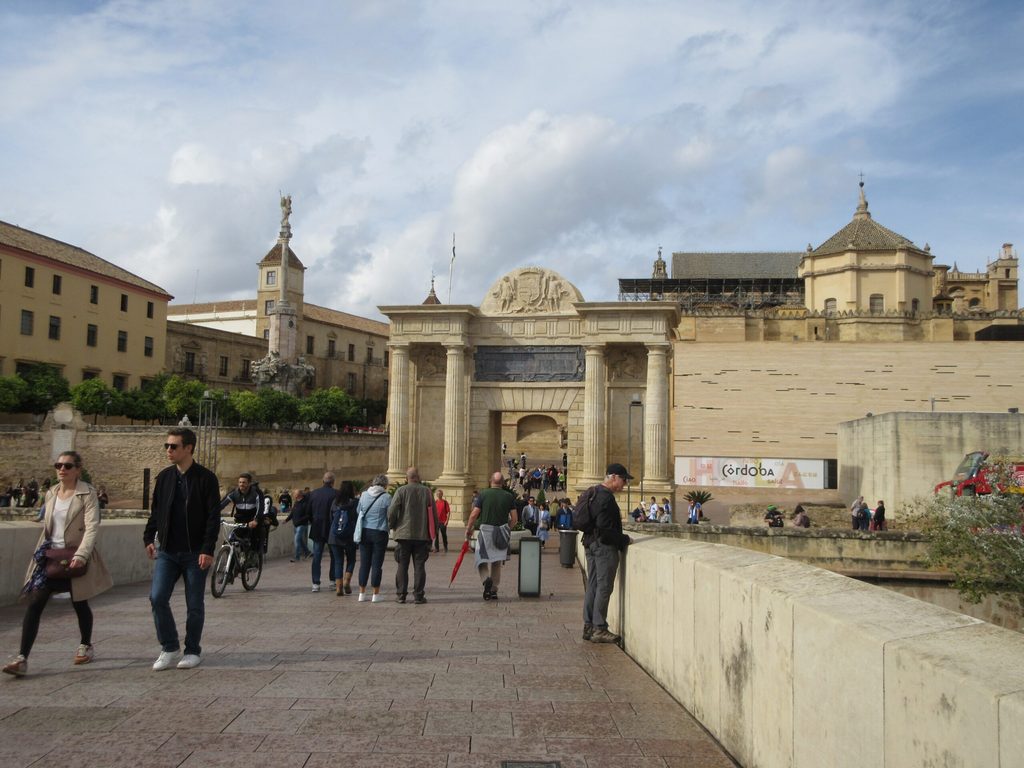
Go on a day trip to Cordoba to see another city in Andalusia. Cordoba has a long and storied past that spans centuries. The city was under Muslim rulers for a substantial part of its history. You’ll see vestiges of Islamic influence in various parts of Cordoba, especially the UNESCO World Heritage-listed La Mezquita. The latter dates to the 8th century when it was built as a mosque. The Catholic monarchs converted it into a cathedral in the 16th century. The interiors of the Mosque-Cathedral is an interesting mix of its Islamic and Christian history.
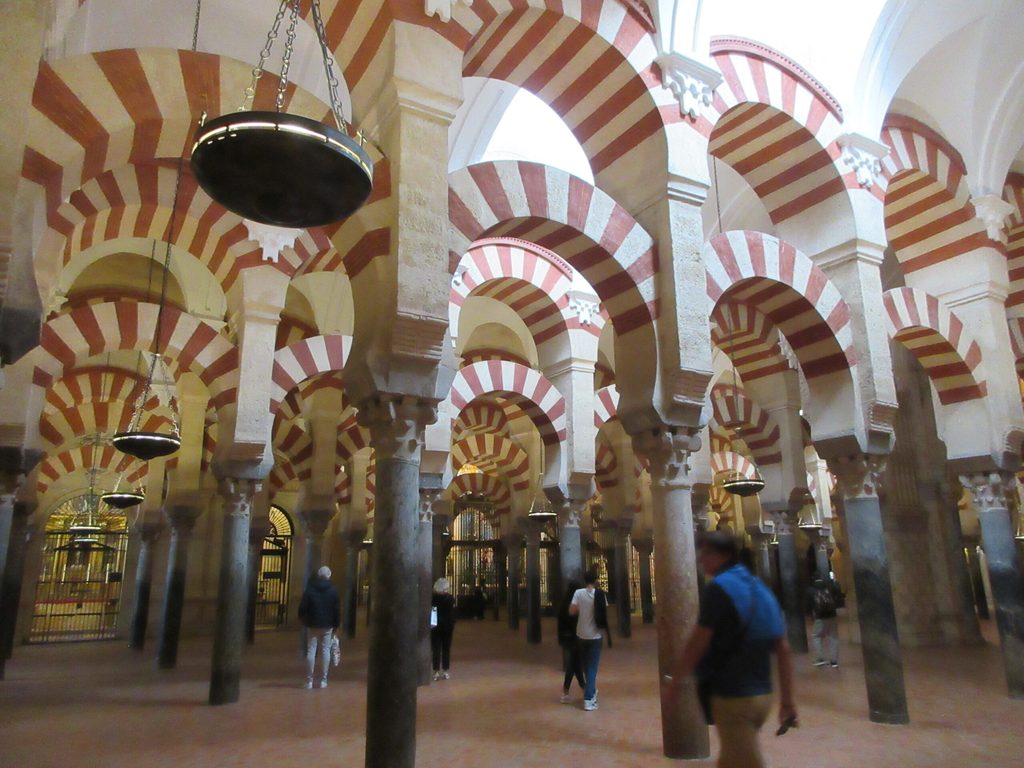
- An entrance ticket for the La Mezquita costs €13.
- You can buy your ticket at the counter or online here.
Cordoba is an atmospheric city to explore. Just outside the La Mezquita is the Puente Romano or the Roman Bridge. It’s a relic of the city’s Roman heritage. Wander around the old Jewish Quarter and explore its narrow alleys that lead to quaint squares and flower-decorated patios. Other places you might be interested in visiting while in Cordoba include Museo de Bellas Artes, Jardín Botánico de Córdoba, Palacio de Viana, and the Alcázar de los Reyes Cristianos.
The most affordable way to do Cordoba as a day trip is to take the bus. Book your tickets in advance to get lower prices. You can book your ticket here.
Day 11
Check out of your accommodation. On your last day in Seville, check out Barrio de Triana. This historic quarter oozes with old-world charm with its winding cobblestone streets. You’ll also find ceramic workshops where you can purchase colorful ceramic tiles. Take a leisurely stroll along the riverfront or just hang out and dine at your favorite cafe or restaurant before departing for Granada in the afternoon.
The most affordable way to go to Granada is to take the bus. Book your tickets in advance to get lower prices. You can book your ticket here.
Granada
Day 12
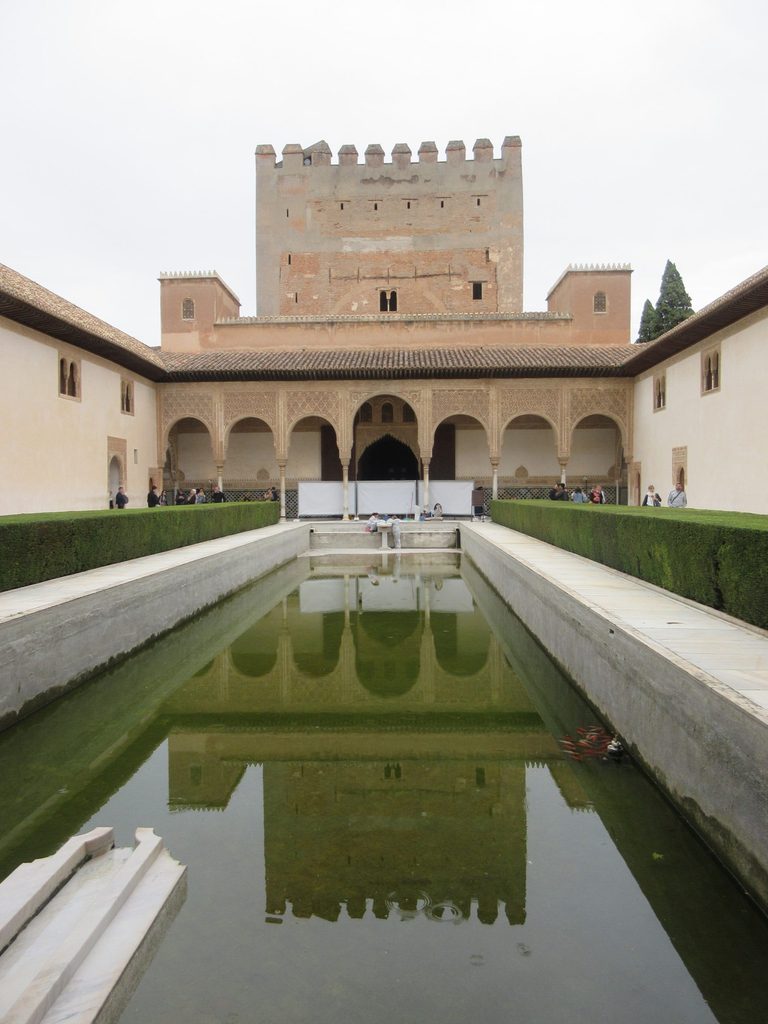
On your first full day in Granada, plan for an entire day trip to the Alhambra. The latter is a huge complex that showcases the history of Granada’s Moorish monarchs. Ibn al-Ahmar established the Nasrid Dynasty. He had the Alhambra built on a plateau towering over Granada. Construction commenced in 1238. His successors continued the expansion and development of the entire complex. After the moors were expelled in the 1490s, Charles V redesigned some parts of the Alhambra to follow the Renaissance aesthetic. Invaders and natural disasters severely damaged the complex over the years. Subsequently, many projects managed to restore the complex to its former glory. The Alhambra consists of courtyards, fountains, palaces, gardens, and other things you’ll likely see inside the fortresses of monarchs from centuries past. Walking through the entire complex will make you feel like you walked into a time warp. The Alhambra also provides some of the best overlooking views of the city.
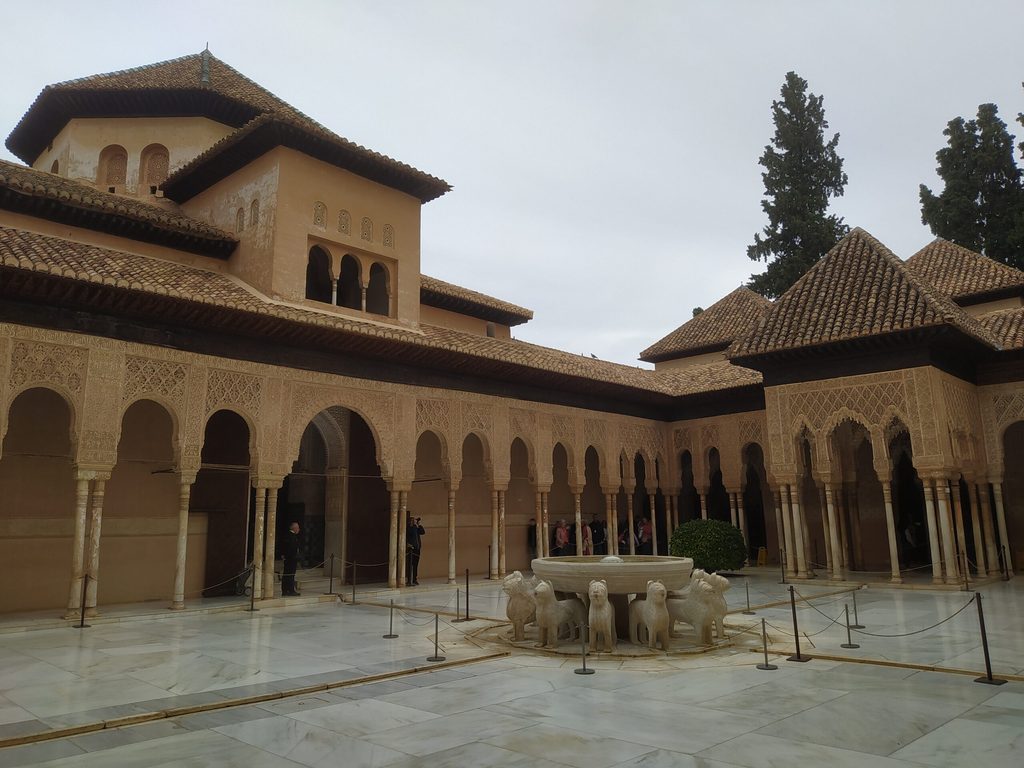
***Make the Nasrid Palaces your first stop once in the complex. The management strictly enforces the time slot visitors choose.
- Buy your tickets in advance (they sell out quickly) and choose a timeslot. You can book here.
- An adult entrance ticket costs €19.09. You can get a discount if you fit the parameters.
Day 13
After breakfast and checking out of your accommodation, visit some of Granada’s attractions before leaving for Madrid. Visit the Capella Real de Granada, which contains the tombs of Ferdinand and Isabella, and other members of the royal family. You’ll also find beautiful statues of the monarchs during your visit. Not too far from the chapel is the Catedral Santa Maria de la Encarnacion. Queen Isabella had this eye-catching Renaissance church built as a monument to the defeat of the Moors. The cathedral’s interior is just as lovely as its stunning exterior with detailed sculptures, an elaborate altar, and paintings by renowned local artists.
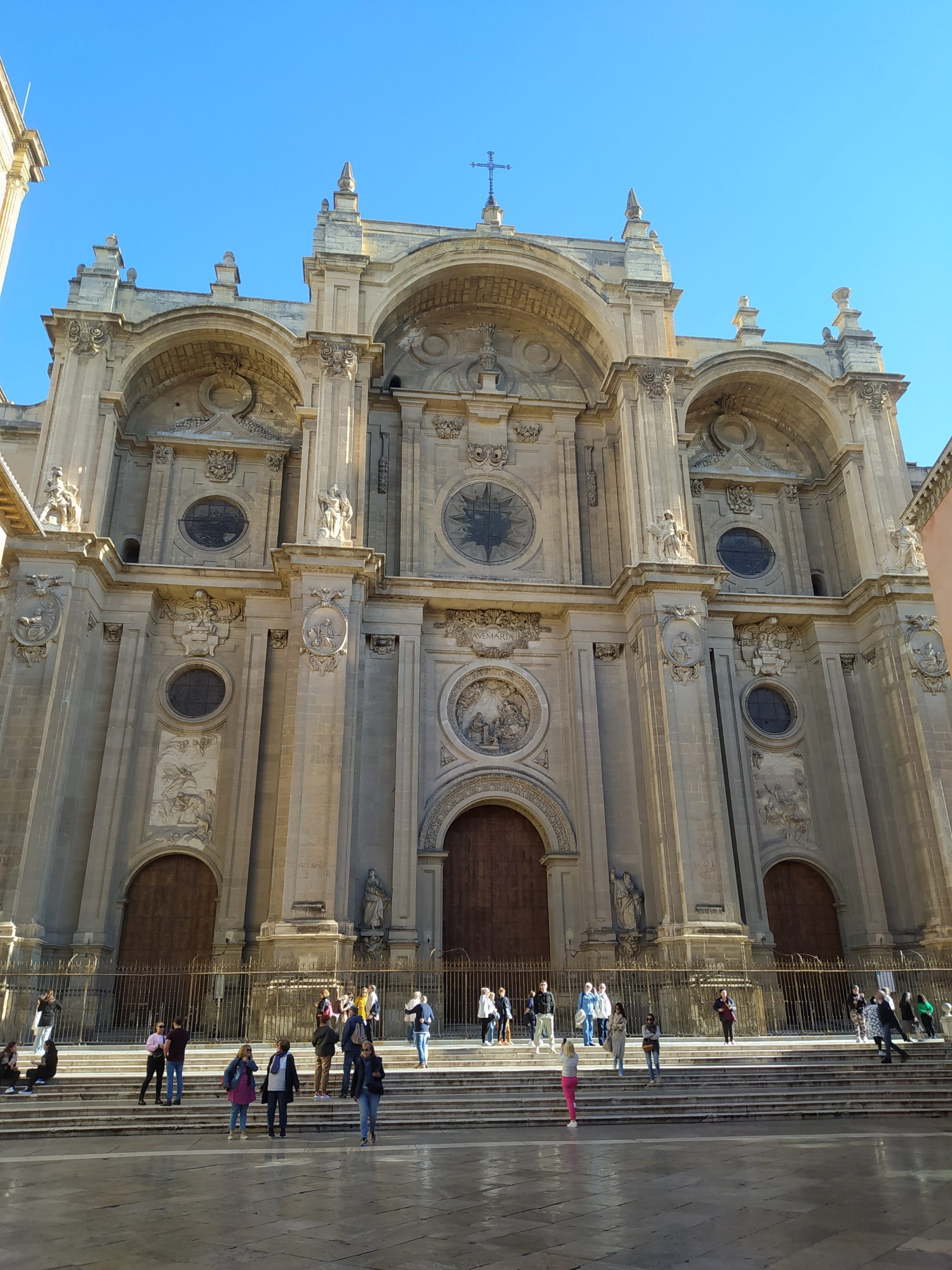
After visiting the churches, explore the UNESCO World Heritage-listed Albaicin Arabic quarter. Explore the winding and narrow streets lined with white houses. As you go up the neighborhood, you’ll see fetching views of the city. You’ll also get beautiful views of the Alhambra. The best viewpoint is at the Mirador of San Nicolas. Another noteworthy neighborhood you can explore is Sacromonte. This gypsy quarter has winding hillside paths that take you to more viewpoints, gypsy houses, a museum, and caves.
After exploring Granada, you can take the late afternoon or evening bus or train to Madrid. Book tickets in advance to get discounted prices.
Madrid
Day 14
Depending on the time of your flight back to Manila, you can do a bit more sightseeing and souvenir shopping. You can get to the airport from the city center by bus, metro, or train. Public transportation is your cheapest option. However, you can hire a private transfer or a taxi to get you to the airport. Bus Express Line 203 departs from Atocha Station to Madrid Airport. If you’re taking the train, board line C1 or C10 train bound for the airport. If you’re planning to take the metro, you’ll have to get on the Line 8 (pink) metro train to the airport.
How much will you spend?
A budget of roughly €75 per day for one person covers accommodation in a dorm room, public transportation, entrance fees to a few museums and attractions, budget meals (with the occasional splurge), bus fare between cities, and grocery food. You can spend less by visiting fewer attractions and solely eating grocery food or buying from bakeries. Taking the train is the faster and more comfortable option, but it’s more expensive than the bus. Book tickets for either one in advance to get discounted prices. This budget doesn’t include shopping and flights from Metro Manila. The sky’s the limit if you’re willing to splurge. – Rappler.com
Joshua Berida is a writer that loves to travel. He blogs at www.thewanderingjuan.net.
Add a comment
How does this make you feel?










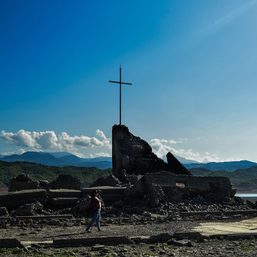

![[WATCH] #ShareAsia: Winter flower viewing at Hasedera in Kamakura, Japan](https://www.rappler.com/tachyon/2024/03/hasedera-tcard-LS.jpg?resize=257%2C257&crop_strategy=attention)
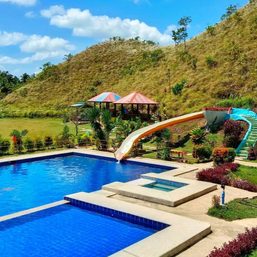
There are no comments yet. Add your comment to start the conversation.